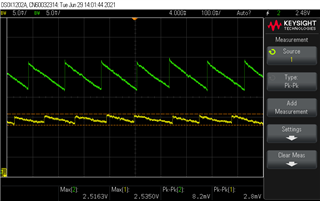hey TI team,
we are using TSP62740 IC in our device. we are getting saw tooth waveform at the output of the IC (Green waveform).
we tried to reduce it by using passive LC filter(2.2uH,10uF).
can you people help us out how can we further reduce and make almost straight line.
I request you to assist us


